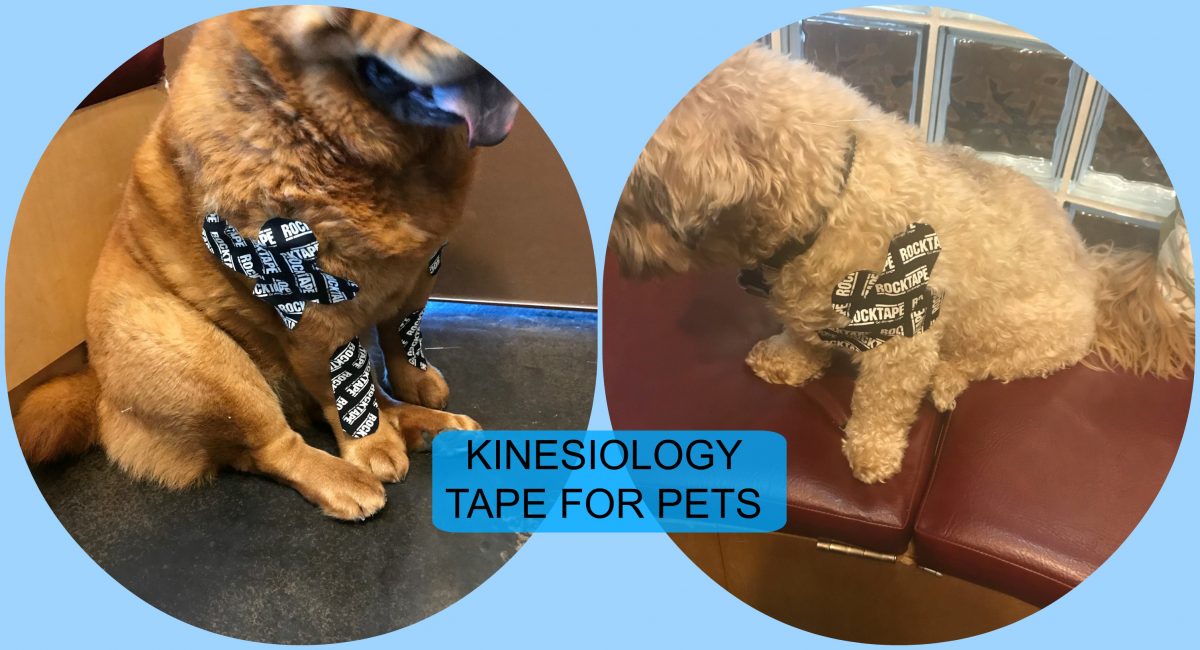
KINESIOLOGY TAPE FOR PETS
Dr. Julie Schell BSc(Hons), DVM, CVA, ACVCHM, CVC
Veterinarians want your pet moving freely and painlessly. Kinesiology Taping, also known as K-Taping, helps them help your pet regain function and pain-free motion.
The skin has many neuroreceptors. Some are sensitive to pressure (mechanoreceptors), some are sensitive to pain (nociceptors), and some body movement and position (proprioceptors) and some temperature (thermoreceptors). They are very sensitive and are the reason we can detect when even a tiny fly lands on our head. They are vital at protecting our body from injury and they help us heal if we are injured.
Kinesiology tape stimulates all of these neuroreceptors, and thus improve circulation and therefore, helps decrease bruising and pain. The tape helps body parts communicate with the brain. This feedback helps the brain improve circulation and healing to that area. The tape also helps create free glide between the layers of skin, subcutaneous tissue and muscle layers.
In a functional neurology view, K-Tape helps wake up a weak limb. It helps the brain and whole body remember the neurological connections between that limb and the brain, and that limb and the rest of the body.
Kinesiology tape stimulates all of these neuroreceptors, and thus improve circulation and therefore helps decrease bruising and pain.
Indications for use:
- Decrease bruising
- Stiff leg
- Not using leg
- Muscle weakness
- Painful limbs
- Other reasons determined by your veterinarian
K-Taping should only be used after your veterinarian has assessed your pet. It should not be used:
- Over open wounds or tumors
- If the pet has sensitivities to adhesives
Pets tolerate K-Tape very well. Sometimes I will tape both the affected leg and the normal leg to prevent the pet from noticing or worrying too much about the tape. Often, when both legs are taped, the pet does not mind as much as if only one leg was taped. After the tape is applied, the pet may smell the tape, and take a few tentative steps, but after that completely ignore the tape.
K-Tape should be left on for as long as it will adhere to the fur. This may be only 30mins, or it may be for 2 days or longer. It often even stays on if your pet goes swimming. If it needs to be removed, you can gently ruffle up the fur around the K-Tape and the K-Tape will gently fall off. Note that it will not damage hair follicles, thus, a show dog will still be able to perform in the show immediately after the K-Tape is removed.
I have never had a patient remove then eat the K-Tape, however you should monitor your pet while he or she is wearing the K-Tape, and report to your veterinarian if your pet has eaten the K-Tape.
For more information, or if you have any questions, contact us at 403-278-1984 or via email at welcome@bowbottomvet.com. Don’t forget to check us out on Facebook!
And check out Dr Wendy Coren’s book: Canine Kinesiology Taping; www.equalign.com 2019


